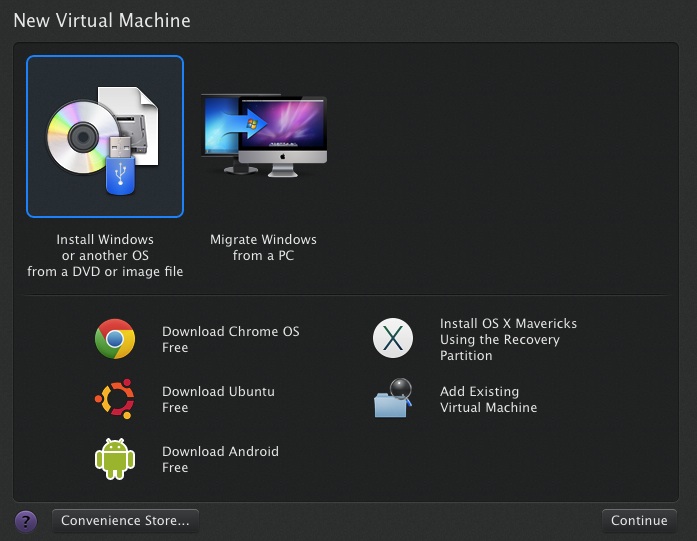

New 1: explain plan for select /*+ parallel(t) */ count(*) from select * from table(dbms_xplan.display) Recovery_parallelism integer "select /*+ parallel(t) */ count(*) from delete from plan_table Parallel_execution_message_size integer 4096 Parallel_adaptive_multi_user boolean TRUE PL/SQL procedure successfully show parameter parallel My quries doesn't run in parallel drop table t
DO I NEED TO HAVE EXISITING WINDOWS FOR PARALLELS FULL
| 1 | TABLE ACCESS FULL | TESTP | 10 | 20 | 2 | | Id | Operation | Name | Rows | Bytes | Cost | TESTP explain plan for select /*+ PARALLEL*/ * from select * from table(dbms_xplan.display) dual Oracle then tunes all subsequent parallel operations automatically.Īnd I did testing on my show parameter automatic In addition to setting this parameter, you must specify the PARALLEL clause for the target tables in the system. When PARALLEL_AUTOMATIC_TUNING is set to true, Oracle determines the default values for parameters that control parallel execution. Hi Tom you said, it is possible to run the queries in paralle using PARALLEL hin when table is noparallen, but,PARALLEL_AUTOMATIC_TUNING is set to TRUE. This would be useful on systems where many long-running transactions are constantly processing (which would need correspondingly long rollback times in the event of an instance crash).

This setting can be used to speed up the recovery from an instance crash.įAST_START_PARALLEL_ROLLBACK Sets how many processes would be available to perform a parallel rollback after the recovery takes place. RECOVERY_PARALLELISM For crash recovery, sets how many parallel threads should be used. PARALLEL_THREADS_PER_CPU Determines the default degree of parallelism and contributes to the adaptive parallelism algorithms, to determine when to back off on the amount of parallel resources. Otherwise, you may need to start the parallel processes in response to a query.

PARALLEL_MIN_SERVERS Sets the number of servers to start when the instance starts and to keep started permanently. You might use this to ensure that a process that takes days unless it gets what it wants doesn't run unless it gets what it wants. PARALLEL_MIN_PERCENT Useful if you would like to receive an error message when you request a specific degree of parallelism but insufficient resources exist to satisfy that request. PARALLEL_MAX_SERVERS Sets the maximum number of parallel query slaves (like dedicated servers but for parallel operations) your instance will ever have. Allows you to restrict the number of instances that will be used to perform a parallel operation (as opposed to the number of processes an instance will use). PARALLEL_INSTANCE_GROUP Applies only to Oracle RAC configurations (Oracle Parallel Server, OPS, in Oracle8i and earlier). PARALLEL_EXECUTION_MESSAGE_SIZE Sets the size of the message buffers used to pass information back and forth between the processes executing the parallel query. PARALLEL_ADAPTIVE_MULTI_USER Controls whether the degree of parallelism should vary over time as the load on the system does should the algorithm for assigning resources "adapt" to the increase in load. As you develop an understanding of what parallel query does and how it does it, try tweaking some of the other parallel settings: Setting a single parameter is a great way to get there.įor the novice user wanting to play with parallel query for the first time, parallel automatic tuning is a good way to get started. I have found that, for most cases, this achieves my desired goal, which is usually to get the best performance, with the least amount of work, in a manner that is most manageable. The degree of parallelism (how many processes/threads will be thrown at a problem) will be decided for me and vary over time as the load on the system varies. Now, all I need to do is set the PARALLEL option on the table (not PARALLEL, just PARALLEL) and Oracle will, when appropriate, parallelize certain operations on that table for me. With this setting, the other parallel settings are automatically set.

As I mentioned earlier, my current favorite way to set up parallelism in Oracle is using the automatic tuning option first introduced in Oracle8i Release 2 (version 8.1.6): PARALLEL_AUTOMATIC_TUNING = TRUE. That topic is well covered in both the Oracle Concepts Guide and Data Warehousing Guide. I will not discuss the physical setup of parallel query operations. Parallel query is my last path of action for solving a performance problem it's never my first course of action. Parallel query is suitable for a certain class of large problems: very large problems that have no other solution. Here is a short quote from my book Effective Oracle by Design on this topic: That you use the automatic parallel tuning.


 0 kommentar(er)
0 kommentar(er)
